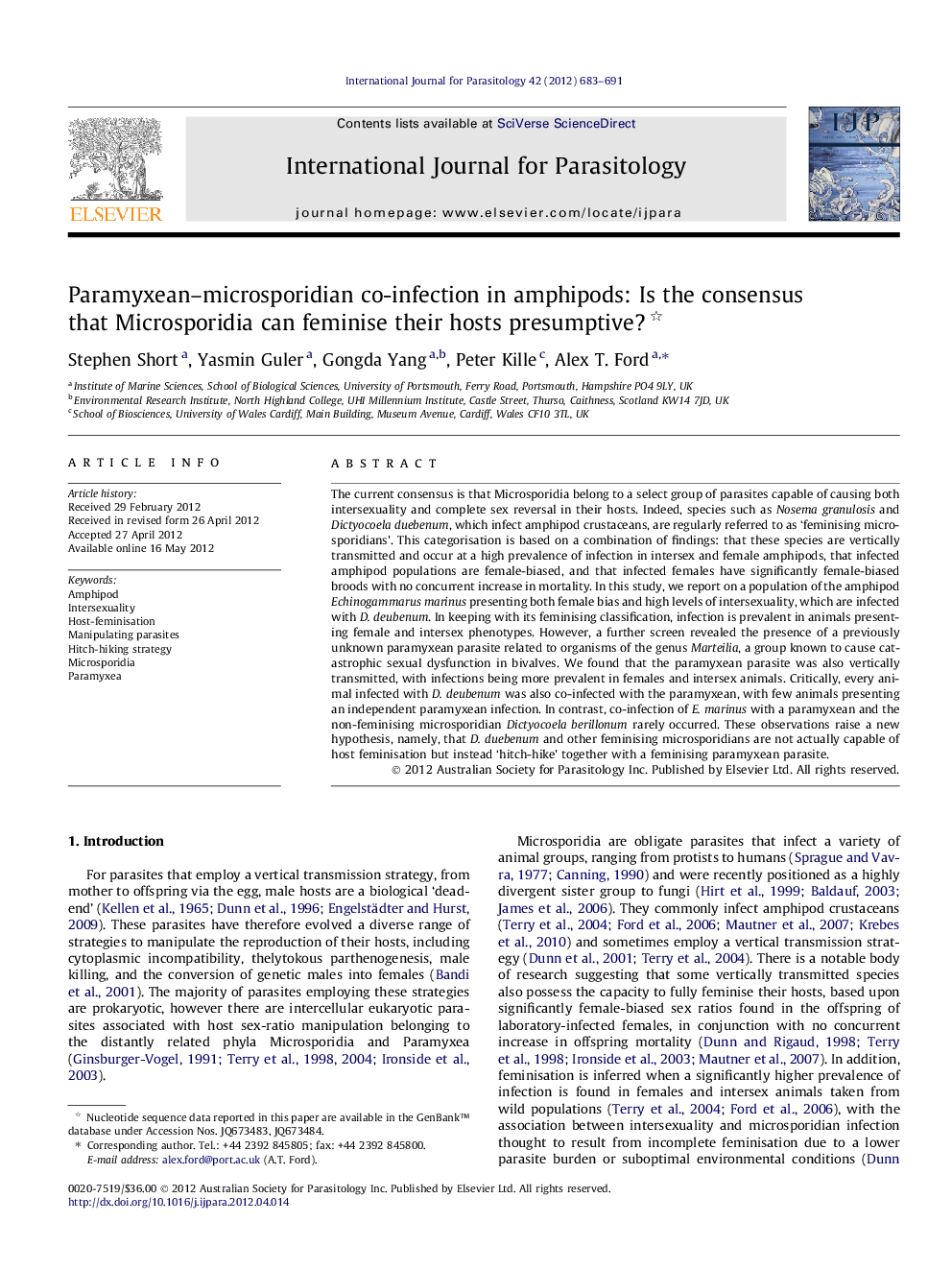| کد مقاله | کد نشریه | سال انتشار | مقاله انگلیسی | نسخه تمام متن |
|---|---|---|---|---|
| 2436109 | 1107275 | 2012 | 9 صفحه PDF | دانلود رایگان |

The current consensus is that Microsporidia belong to a select group of parasites capable of causing both intersexuality and complete sex reversal in their hosts. Indeed, species such as Nosema granulosis and Dictyocoela duebenum, which infect amphipod crustaceans, are regularly referred to as ‘feminising microsporidians’. This categorisation is based on a combination of findings: that these species are vertically transmitted and occur at a high prevalence of infection in intersex and female amphipods, that infected amphipod populations are female-biased, and that infected females have significantly female-biased broods with no concurrent increase in mortality. In this study, we report on a population of the amphipod Echinogammarus marinus presenting both female bias and high levels of intersexuality, which are infected with D. deubenum. In keeping with its feminising classification, infection is prevalent in animals presenting female and intersex phenotypes. However, a further screen revealed the presence of a previously unknown paramyxean parasite related to organisms of the genus Marteilia, a group known to cause catastrophic sexual dysfunction in bivalves. We found that the paramyxean parasite was also vertically transmitted, with infections being more prevalent in females and intersex animals. Critically, every animal infected with D. deubenum was also co-infected with the paramyxean, with few animals presenting an independent paramyxean infection. In contrast, co-infection of E. marinus with a paramyxean and the non-feminising microsporidian Dictyocoela berillonum rarely occurred. These observations raise a new hypothesis, namely, that D. duebenum and other feminising microsporidians are not actually capable of host feminisation but instead ‘hitch-hike’ together with a feminising paramyxean parasite.
Figure optionsDownload high-quality image (44 K)Download as PowerPoint slideHighlights
► A feminised amphipod population was screened for the presence of parasites.
► Both microsporidia and an unknown paramyxean were present in feminised amphipod specimens.
► The microsporidian recovered, Dictyocoela duebenum, is a well-known feminising parasite.
► Every D. duebenum-infected animal was co-infected with the unknown paramyxean.
► We suggest that microsporidians ‘hitch-hike’ and the paramyxeans are the true feminisers.
Journal: International Journal for Parasitology - Volume 42, Issue 7, June 2012, Pages 683–691